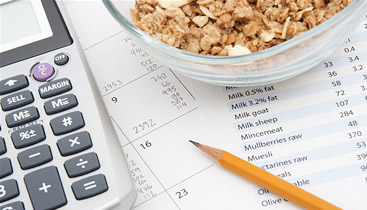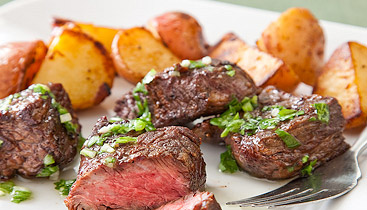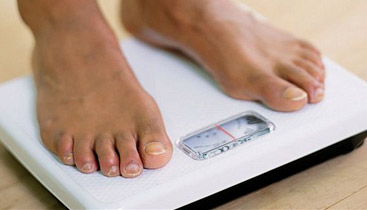HOW MANY CALORIES TO GAIN MUSCLE PER DAY?

There are many smaller details that go into planning out a complete muscle building diet, but at the very heart of it all is one critical underlying factor: calorie intake.
This is the central principle that forms the entire foundation of any properly structured eating plan, and every other piece of your diet is ultimately built upon it.
You can put as much effort into your training plan as you want, eat nothing but the highest quality food sources all day long, and take every bodybuilding supplement under the sun, but none of that will make any difference at all if you aren’t eating the proper number of calories to gain muscle each day.
What exactly are calories?
To put it simply, calories are energy. Every day your body requires a certain amount of energy both to fuel its natural processes (breathing, digestion, circulation etc.) as well as all of your additional activities.
In order to build muscle, you must provide your body with a “calorie surplus” by consistently taking in more calories than you burn. This provides your body with the extra energy that is needed to synthesize new lean tissue.
This is known as the “law of energy balance”, and without that additional surplus of energy, your body simply won’t have the means to build any appreciable amount of new muscle.
Yes, in untrained individuals or those with superior genetics it can be possible to build a small amount of lean mass without one (as the body uses the calories from stored fat as a way of fueling the process), but it won’t be anywhere near what you’d gain from eating in a straight calorie surplus.
Bottom line: If your primary goal is to get bigger and stronger, and to do it in the fastest way possible, a consistent calorie surplus is a must.
But exactly how many calories should you eat per day in order to accomplish this?
Determining your individual daily calories to build muscle is a fairly straightforward process, and here is a complete rundown of the 4 steps you’ll need to follow…
Daily Calories To Gain Muscle: 4 Simple Steps
Step #1: Find Your Calorie Maintenance Level

Your calorie maintenance level is the number of calories you require each day in order to maintain your current body weight.
It takes into account your basal metabolic rate (the total number of calories your body requires each day for natural processes, such as breathing, digestion and circulation) plus your activity level.
Although you’ll find many different calorie calculators online that will do this for you, keep in mind that these are all just estimations and that there’s actually no way to predict right at the outset what your exact calorie maintenance level will be.
There are simply too many individual factors to take into account, and your initial calculation should always be thought of as an “educated guess” at the start, which can then be modified afterwards depending on how quickly or slowly you gain weight.
As a basic starting point, simply take your body weight in pounds and multiply it by the following activity level figures in order to determine your approximate calorie maintenance level…
Sedentary = Bodyweight X 14
Lightly Active = Bodyweight X 14.5
Moderately Active = Bodyweight X 15
Very Active = Bodyweight X 15.5
Extremely Active = Bodyweight X 16
Take into account your training frequency, job, as well as additional activities you perform outside of the gym when making your selection.
Step #2: Create A Small Calorie Surplus To Support Muscle Growth

Now that you have your starting calorie maintenance level in place, you’ll then need to increase that number in order to land on the proper daily calorie intake for muscle growth.
The key here is to take things slowly and to only create a small surplus at the start, and then gradually adjust as you go along.
Remember, any time you attempt to gain a significant amount of muscle, you’re always going to gain some body fat along with it. This is completely normal and is to be expected, as there’s no way to divert 100% of your calorie surplus towards muscle growth only.
If you start off by making a sudden, dramatic increase to your calorie intake by aimlessly shovelling piles of food down your throat at all hours of the day, you’re almost certainly going to end up gaining an unnecessarily large amount of body fat which you’ll then be stuck with for the entirety of your bulking phase.
This is one of the biggest mistakes that trainees make when structuring their diet as it causes them to constantly “yoyo” back and forth between bulking and cutting, never really making any appreciable progress in either direction.
Your body can only build a finite amount of muscle over any given day anyway, so eating more calories beyond what your body can utilize at one time isn’t going to help you put on muscle at a faster rate in the first place.
If you want to do this the right way, then a gradual approach is almost always the best way to go about it.
In order to support optimum gains in lean muscle while keeping body fat levels under control, my recommendation is to start by adding 250-350 calories on top of your maintenance level.
This daily calorie intake for muscle growth is large enough to allow you to build muscle at or very close to your maximum potential, but small enough that you’ll stay relatively lean throughout the process.
So, if you calculated your maintenance level to be 2200 calories per day, your daily calories to gain muscle would be 2450-2550 calories.
In terms of breaking this down into individual macronutrient numbers, here’s a basic starting point you can use for that as well:
Protein: 1 gram per pound of body weight daily (protein contains 4 calories per gram)
Fat: 25% of total calories (fats contain 9 calories per gram)
Carbohydrates: Remaining calories after protein and fat is calculated (carbs contain 4 calories per gram)
Step #3: Monitor Your Initial Results And Adjust Accordingly

As I said before, your initial calorie intake should be treated as a starting point, and you may need to adjust it up or down once you get going.
To do this you’ll want to monitor your changes in body weight, as this will tell you how large or how small of a net surplus you’re in.
If you’re gaining body weight too quickly then you’ll need to dial the calories back, or if you’re gaining weight too slowly (or not at all) then you’ll obviously need to increase them.
A good general guideline for a typical beginner is to aim for a total body weight gain of about 2-3 pounds per month.
If you’re gaining less than this then you’re likely not building muscle at your maximum potential, and if you’re gaining more then you’re likely gaining body fat at too quick a pace.
Make sure to weigh yourself first thing in the morning without any clothes on, before eating and after using the washroom.
For every year of proper training and eating that one gets under their belt, these figures should decrease by roughly 50%.
Keep in mind that these are just general estimations though, as individual muscle growth rates will vary quite a bit from person to person depending on their genetics and how closely they adhere to their program.
So, implement your starting point calorie intake, and then adjust it up or down if necessary until you fall within the desired weight gain range.
Step #4: Gradually Increase Your Calories As You Make Continued Gains

Once you’ve settled into your diet and have a good idea of how many calories you require to maintain your weight and to gain new muscle (this is something that largely comes with experience), you’ll want to continue monitoring your results and tapering your calories upward whenever you hit a weight gain plateau.
Remember, your body not only requires calories to gain additional muscle, but also to maintain the existing muscle you have. As you add more and more lean tissue to your body, you’ll have to continue increasing your calorie intake in order keep up.
In order to do this effectively, simply monitor your changes in body weight, and whenever it stalls for a period of about 2 weeks, increase your total daily calories by 100-150.
Continue with this process until you’ve reached your desired level of muscular development or until you want to switch into a cutting phase and focus on losing the extra body fat you’ve gained.
Daily Calories To Gain Muscle: Quick Review

Remember, proper calorie intake forms the entire underlying foundation of your diet, and without it, your results will either be far below your true potential or non-existent altogether.
Don’t make the mistake of overlooking this basic principle, or all of your effort in the gym could simply go to waste.
Calculating your daily calories to build muscle just takes 4 simple steps…
1) Calculate your starting point calorie maintenance level by multiplying your body weight in pounds by 14-16. Select the higher or lower end of the range depending on your total daily activity level.
2) Add 250-350 calories on top of your maintenance level to create a small calorie surplus to facilitate muscle growth.
3) Monitor your results and adjust your calories up or down depending on how quickly or slowly you’re gaining body weight. In the first year of proper training, aim for around a 2-3 pound per month gain, with that figure reducing by about half for each subsequent year.
4) Whenever your body weight stalls for a period of 2 weeks, increase your calories by 100-150 to allow for continued gains.
When it comes to proper calorie intake for weight gain and muscle growth, those are the basic principles you need to know to get started.
If you found this article helpful, make sure to sign up for your FREE custom fitness plan below...




